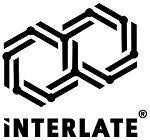As a plant engineer, technical leader or process manager, have you ever:
- Lost countless hours establishing and re-establishing plant operating strategies and setpoint ranges?
- Struggled with achieving alignment in operating strategies from crew to crew, or even team member to team member?
- Found it difficult to justify a data-driven rationale for a set of plant operating tactics in comparison to anecdotal, opinion-driven rationale?
- Dealt with repeat events of process instability largely driven by highly variable setpoint selection which, in the worst circumstances, actually mask the underlying ore response and treatment performance?
- Operated with an unnecessarily wide allowable operating range for critical plant variables simply to assist with compliance to strategy?
Throughout Interlate’s operational delivery history, we have frequently observed:
- Bottom line productivity loss in the order of 1 – 3% simply from holding setpoint ranges, operating tactics, plant recipes, which are too broad / non-compliant, or are simply incorrect based on the available data and process knowledge
- The limited ability to tighten setpoint operating ranges by approximately 25% – 50% without moving outside the existing operating envelope
- The limited ability to set up plant operating strategies on a preferred-type basis in as little as a few minutes, to match the current operating context and priorities
Our solution
Setpoint Selection (SPS) is an easy-to-use software solution for rapidly exploring, fine-tuning and rationalising plant operating strategy from a historical data-driven perspective.
Some of our customers refer to this process of setting contextual operating strategies as “setpoint selection”, “parameter setting”, “the operating envelope” or “the recipe book”, amongst many others.
SPS is a quick, high-value precursor to our predictive modelling, machine learning and real-time plant optimisation solutions.
SPS enables fast and objective discussions and interpretations between plant engineers (e.g. metallurgists), operators, and technical and operational leaders. By enabling diverse teams to come to real and objective conclusions about how certain feed types should be treated, our software helps to foster consistency and cohesion between teams and individuals.
The tool is configured to directly tell users what the productivity uplift of the dependent variable (typically your chosen KPI) is estimated to be, enabling rapid hypothesis testing and opportunity quantification. Rapid hypothesis exploration by our in-house engineers has been a cornerstone philosophy of Interlate’s analytical services for several years, due to the associated pace of learning and Time-To-Value.
How do you use SPS?
- Input your chosen asset data
- Perform any preliminary shaping, filtering, and cleaning
- Identify the core dependent (e.g. KPI’s of interest) and independent (e.g. process control setpoints) variables to display
- Constrain with additional dimensional filtering (e.g. focus on a particular ore blend, grade category, crew/shift, etc.)
- Quickly iterate over the data visualisation, removing poor performing historical operating strategies to reveal your chosen operating strategy
- Download your fine-tuned operating strategy for further communication / processing immediately
Interlate can help. From initial configuration and deployment, through to training and even real-time support, Interlate’s service backbone supports you with early usage and adoption.
Who uses it?
- Plant process engineers
- Metallurgists
- Frontline operational and technical leaders
- Domain-focused data scientists for initial visual exploration
What plant assets is the software applicable to?
Our service teams have used the tool repeatedly on any asset where the established data granularity allows for reasonable correlations between large suites of process control variables and relative output KPIs. Suited to continuous processes such as:
- Minerals processing value chains, including crushing, primary and secondary milling, flash, rougher and cleaner flotation, regrind circuits, dewatering and product handling
- Coal handling and preparation plants, including dense medium separation, fines treatment and product handling
- Iron ore beneficiation plants, including ore scrubbing, coarse circuit crushing and screening, and fines circuit separation
What are our related software solutions?
- Digital Twin Generator to enable predictive modelling
- Real-Time Plant Optimiser
- Galaxy API, Interlate’s complete data science and domain library
- Measure Table Engine allowing input data aggregation
What are some example opportunities identified?
0.7% 1.0% 5.0%
In additional full plant Cu recovery at target grade via rougher flotation operating range updates, across multiple feed grade ranges.
1.0%
In additional Fe ore product tonnage at target market grade via ore scrubbing and fines circuit operating strategies across multiple feed types.
5.0%
In additional coal product tonnage at target ash via dense media cyclone (DMC) recipe updates, across multiple feed types.
Creating a sustainable future through enhanced productivity.
For more information, please contact us via the information on our profile.

